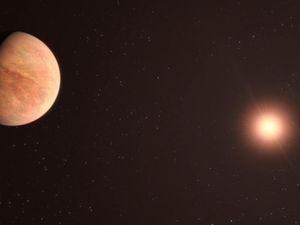Astronomers observe rocky planet with half the mass of Venus
Also among their findings were an ocean world, and a possible planet in the habitable zone.

Astronomers have observed a rocky planet out of our Solar System that has just half the mass of Venus, and another that may support life.
The rocky planet is the lightest exoplanet ever to be measured using a technique which relies on the fact that a star does not remain completely stationary when orbited by a planet.
Researchers used the European Southern Observatory’s Very Large Telescope (ESO’s VLT) in Chile to shed new light on planets around a nearby star, L 98-59, that resemble those in the inner Solar System.
Maria Rosa Zapatero Osorio, an astronomer at the Centre for Astrobiology in Madrid, Spain, and one of the authors of the study, said: “The planet in the habitable zone may have an atmosphere that could protect and support life.”
The newly studied planetary system, named L 98-59 after its star, is a target for future observations of exoplanet atmospheres.
It orbits a star only 35 light years away and has now been found to host rocky planets, like Earth or Venus, which are close enough to the star to be warm.
With the help of ESO’s VLT, the astronomers’ observations indicate three of the planets may contain water in their interiors or atmospheres.
The two planets closest to the star in the L 98-59 system are probably dry, but might have small amounts of water, while up to 30% of the third planet’s mass could be water, making it an ocean world, researchers say.
The team also found exoplanets that had not previously been spotted in this planetary system.
They discovered a fourth planet and suspect there is a fifth, in a zone at the right distance from the star for liquid water to exist on its surface.
“We have hints of the presence of a terrestrial planet in the habitable zone of this system,” said Olivier Demangeon, a researcher at the Instituto de Astrofisica e Ciencias do Espaco, University of Porto in Portugal, and lead author of the new study.
Astronomers say the study, published in Astronomy & Astrophysics, represents a technical breakthrough as they were able to determine, using the radial velocity method, that the innermost planet in the system has just half the mass of Venus.
This makes it the lightest exoplanet ever measured using this technique, which calculates the wobble of the star caused by the tiny gravitational tug of its orbiting planets.





